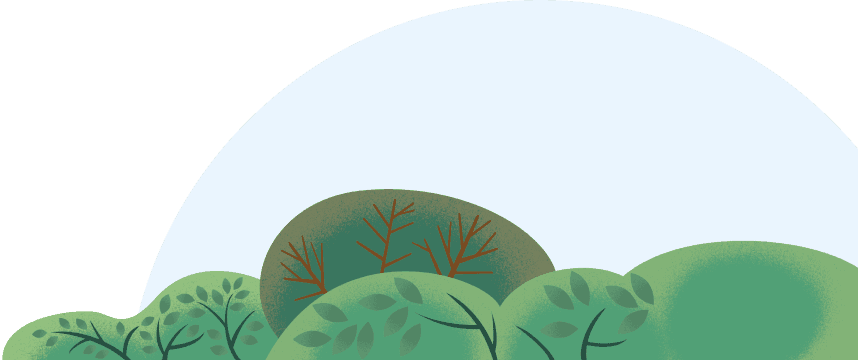Think AI implementation is just plug-and-play? Nicole Pomponio, 2025 Salesforce MVP and self-proclaimed “process nerd,” has an update for you: “Setting up Agentforce is the start of a journey — it’s most powerful when you continuously guide your agents, refine your processes, and evolve alongside them.”
As Director of Delivery Management Operations at SaltClick, she’s saving teams hours every day by bringing Agentforce into Slack, eliminating the context switching that’s burning people out. Her secret to success is a teacher’s mindset applied to AI strategy—”I do, we do, you do”—building foundational understanding before anyone touches a button. While others struggle with AI adoption, Nicole is busy proving that when you have a strategy-first mindset and treat AI as an assistant, not a replacement, magic happens. Ready to get an inside look at how Nicole makes Agentforce and AI work with people in Slack, not against them?
What’s a typical day like for you at SaltClick?
As the Director of Delivery Management Operations at SaltClick, my days are never the same, and I absolutely love that! I hate to be bored.
We’re a Salesforce and Slack partner, so I work with nearly every product in the ecosystem. A typical day is always different, but I work with our delivery teams to solve any challenges they might have and lead our project managers. I also project-manage some of our enterprise-level clients, focusing on the “iron triangle” of budget, timeline, and scope while also looking out for potential risks. My main goal is to deliver the best possible results for our customers. I’m a huge “cat herder” and love process and structure, but I also try to balance that out with understanding where teams are at in their maturity models.
How does using Salesforce and Slack products help you succeed at SaltClick and what are some common blockers you’ve encountered?
Using the products ourselves is essential to enable our customers better. If we didn’t use these products in our day-to-day work, I don’t think we could authentically tell customers they are the best on the market. It gives us a lot of honesty and transparency in what we can actually deliver to our customers.
One of the biggest blockers is the misconception that a new product is “plug-and-play.” Customers might think it’s as simple as turning on a new feature, but when we get into their Salesforce instances, the existing setup can vary dramatically. This often creates a roadblock as we help them understand not only the products but also how we can successfully implement them in their specific environment. Another challenge is making sure we have the most up to date information of a product’s full capabilities and how best to use them. Keeping up with training and documentation is crucial along with hands-on training.
How has AI helped you overcome some of these hurdles?
I’m a huge advocate for AI. We set guidelines of course to ensure data privacy and I think it’s incredibly powerful for our teams to leverage tools like ChatGPT and other notetaker apps. These tools can help structure thoughts, organize documentation, and help us consider perspectives we might not have thought of. They’re not meant to formulate your ideas for you—I want people to retain the ability to think—but they can help you identify gaps in your thought process. It’s important to help people understand that AI is a tool to enable them, not replace them.
Over 13 years working in the Salesforce ecosystem, how have you approached learning and staying current with new products like Agentforce and features rolled out on Slack?
My approach to learning is rooted in my past life as a middle and high school English teacher. I use the “I do, we do, you do” method. First, I do the learning myself by consuming as much information as I can from Trailhead, YouTube videos, and conversations with other people. Then, we do it together by getting hands-on with the product. The final step is you do it—I teach others what I’ve learned and then allow people to take on the tasks on their own. For me, the best way to truly comprehend something is to explain it to someone else. Teaching is how the information really sticks. When I started my career 13 years ago, Trailhead was just emerging, and it was really hard for me personally to network and figure things out on your own. While there are a lot more resources now, it’s still about learning and then sharing that knowledge with the community.
What’s your biggest piece of advice for someone looking to get started with Agentforce?
I would emphasize that before you turn anything on, you need to get a foundational understanding of what Agentforce and AI are. I highly recommend working through the Trailhead modules because they provide a structured experience that builds upon itself. Once you have that foundational knowledge, then you can go and get hands-on. There are so many moving parts to Agentforce, so understanding what it is and what it does first is crucial. I had many “aha!” moments when working through the Legend Trail because they bring all the different pieces together.
What has surprised you most about working with Agentforce inside of Slack?
I was surprised by how seamless and easy it is to leverage what you build in Agentforce and make it available in Slack. It doesn’t feel like another huge, complicated thing to learn. It’s so exciting because it’s pulling together structured data from Salesforce and combining it with the unstructured, conversational data from Slack. This is incredibly powerful, especially since it’s hard to keep up with documentation and knowledge bases. To be able to surface and condense everything right in the flow of work is a huge time saver.
How do you see Agentforce and Slack working together to help people?
I think what’s really powerful about Agentforce and Slack working together is how it surfaces and condenses all the information somebody might need right in the flow of work. We’re Slack-first all the way, and our people love that they never have to leave Slack.
It brings everything together and makes their jobs a lot easier. I’m huge on having fun at work—I tell corny jokes all the time because I want people to have a really fun and empowering day and Slack helps make the day-to-day work much more efficient. When they don’t have to go to multiple systems and context switch as much, especially in our remote world where burnout is very real, it makes such a difference.
Having an agent work like an assistant—not there to take your job, but to help you get through your day faster—has been really exciting. It gives people time and energy to think about and do other things because they don’t have to go find all this information. It’s just right there for them.
It’s been really cool, honestly. The more you can plug into Slack, the less I have to leave it. I’m a huge mobile person too because I want to be on the go and still get people the answers they’re looking for. The power of having everything right there—not just finding and summarizing information, but actually taking action too—is a huge timesaver. I can say ‘yeah, this looks good to me, let’s go for it!’ and I don’t have to handle all those steps myself. It is a game changer!
How do you talk about the impact of AI agents working alongside humans?
I definitely think about it in terms of hours saved. When we’re being really honest about metrics—like, do I actually track how much time I’m spending just sending an email or doing individual tasks? Probably not unless you are used to living the consultant life or in the habit of logging billable time. But if we think about how many more tasks I’m getting through in a day, I’m saving significant hours.
I’d also speak to it in terms of process optimization and efficiency. I’m not having to go to five different systems anymore. A lot of the behind-the-scenes work, if I’m connecting the right systems and getting the right data, could just be automated or surfaced on-demand.
There’s a lot to say about understanding what is taking up the most time in your day, where the data for these things lives, and then how we can actually give people more time back in their day because those processes are now enhanced. It’s really about identifying those routine tasks and letting AI handle them, allowing people to focus on higher-value work.
What’s your approach to change management with Agentforce in Slack?
My approach to change management is all about understanding where a company or person is at and working to help them understand the possibility of the technology and how it could impact their day positively. The first step is to assess their current state, including how their data is organized and what their existing processes look like. Then, we identify their desired outcomes, the specific use cases, and the key stakeholders who should be involved. It’s important to find champions and also understand the sentiment of anyone that might not be in favor of the changes to ensure everyone feels heard. The goal is to make sure our clients understand what they’re trying to accomplish, get their teams on board, and actively involve them in testing. We want to ensure that once the solution is live, it is truly helping them. Following good change management is imperative for success because much of what is being developed through AI is process.
As you continue to iterate with AI and Agentforce, what are some of the things you’re most excited to try in the future?
I’m biased, but I’m most excited to see what we can accomplish with Salesforce and Slack. On a nerdy note, I’m also really excited about the prospect of agents talking to other agents. I’d love to see a future where my Slack agent can talk to another person’s agent, having a controlled conversation and even taking actions. It’s like a next-level step I’m really looking forward to.
What made you choose the Salesforce ecosystem as a career path?
I actually started my career as a teacher, but I was first introduced to the Salesforce ecosystem when I was building reports. I was so impressed with how powerful the system was that I just fell in love. I worked in admin and dev roles for over a decade. After having my second son, I took a step back to re-evaluate what I wanted to do. That’s when I decided to make the leap into being a Project Manager at SaltClick. I love the ops and process-nerd side of it, and it was the best decision I’ve ever made. SaltClick has been such a defining moment in my journey.
The best part of the journey has been the community and that is true of SaltClick as well. It’s not cutthroat; everyone is so kind, supportive, and helpful. I truly don’t think I would be where I am without the people and the support of the community.
What has it meant to you to be on the inaugural Salesforce Community Advisory Board a 2025 MVP?
Oh my god, it’s meant everything to me. I have shared this a few times because I want to advocate for Special needs parents everywhere, and I’ll share a little bit more here about what was happening when I decided to make the shift into the Salesforce and Slack world.
Around that time, we were coming to the realization that my oldest son was having some challenges. He’s an amazing little human, but it was definitely shifting some things in our world. For me, it became a confidence thing too. You’re taught in some cultures that being a mom is one the most important things and that was true for me, and you have this image of what that’s going to be like—and then it’s not. You start to really question yourself.
It was this interesting time where I didn’t know what I was going to do with my career or how to help my child. Could I get these two worlds to align and get on a solid path where I felt good about what was happening?
Fast forward to now, and it’s been night and day. We got him the help he needed, and I feel like I got help from the community too. As corny as that might sound, we found what he needed, which helped us get where we are today. Being able to jump back into the community with the support I received—to now be in a position where I’m on the Community Advisory Board and I’m an MVP—honestly, it’s not something I ever thought would happen.
For me, it’s very reflective of imposter syndrome. I’m hoping I really am making that much of an impact, because in the back of my mind I wonder: do I deserve this? Have I done enough? I want to do so much more. But it is such a cool experience, and I’m so grateful.
What do you enjoy in your free time? Hobbies?
Okay, super nerdy. I’m a huge book nerd, but it’s not even fiction—I read lean six sigma, change management stuff, really process and operations nerdy things. I’ll read emotional intelligence books too.
I love to cook and bake. I’m an avid runner, and I’m training for a 10K right now, so I’ve been pushing myself to get back into running. I was doing half marathons before, so that’s been really fun getting back into it.
And then I just spend as much time as I can with my family. In the morning, I get a few solid hours with the kiddies, and then in the evening we just try to soak it all up. But it’s really just trying to keep up with them. I’m assuming I’ll have more hobbies when I get older—right now I’m just trying to keep up!
Nicole’s top 3 Agentforce learnings
- My number one tip, which I repeat all the time, is to think about your Agent and AI strategy before you start building anything. It’s important to understand what problem you want to solve, what your agent can and can’t see and can and can’t do, and what success looks like. This feeds all of your next steps in the Agent lifecycle.
- My second tip is that Agentforce is not something you just turn on and it “works.” We have to do the work; making sure the data needed is available and ready to use, making sure we have well crafted prompts that inform and guide our agents and we have to test, monitor and iterate. Setting up Agentforce is the start of a journey — it’s most powerful when you continuously guide your agents, refine your processes, and evolve alongside them.
- Picking just three tips is hard, so my third is to keep learning and share your knowledge. Don’t skip building foundational knowledge in AI so you understand how expansive and impactful AI can be and don’t skip SHARING YOUR KNOWLEDGE. We are at a critical time in technological advancements and we need to keep our fellow humans in mind. Let’s make sure no one gets left behind.
Want to meet more Agentblazers like Nicole?
Check back soon for more stories and join the community for the latest Agentforce content.






















